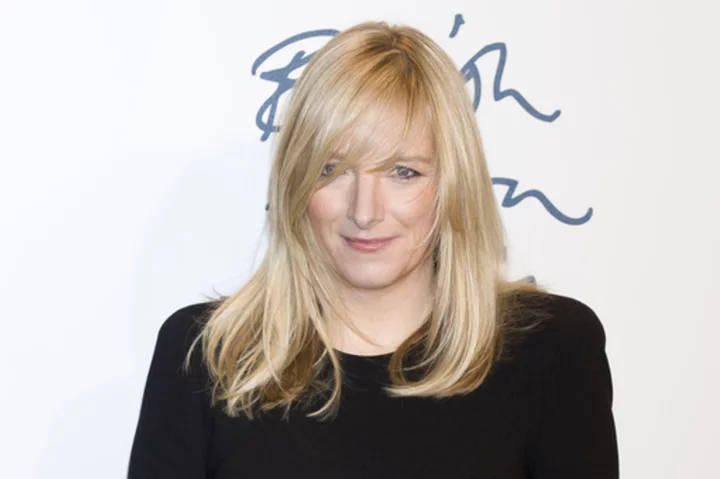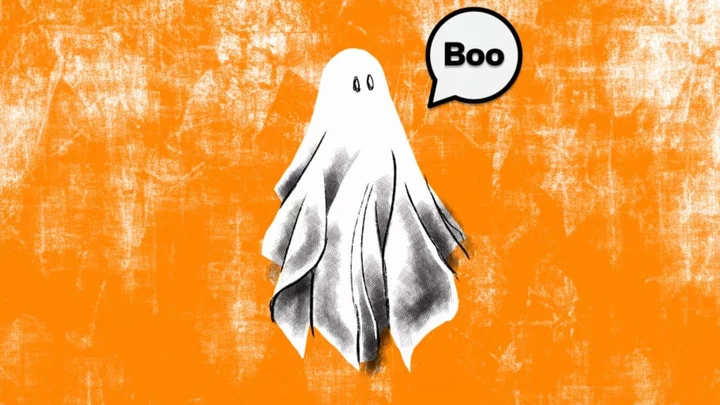NEW YORK (AP) — A Colorado school is creating a “zen den” for troubled students. A soccer coach in Pittsburgh goes out of her way to relieve pressure on players. A Chicago community group equips a van for mobile mental health help, and a Los Angeles school trains students to counsel peers.
Each effort to tackle youth mental health issues has been featured on a local CBS newscast recently, examples of a movement toward “solutions journalism.”
The idea is that reporters need to be more than the bearer of bad news.
“We want to look past the who, what, where and why to asking ‘how can we help?’” said Wendy McMahon, co-president of CBS News and the CBS Television Stations. “How can we help make our communities better places to live? That's the aspiration.”
CBS has trained news leaders in solutions journalism at the 14 local stations it owns, in big markets like New York, Los Angeles and Chicago, and opened an “innovation lab” for them to work together on stories.
The network works with the Solutions Journalism Network, an organization formed in 2013 by two former New York Times reporters, David Bornstein and Tina Rosenberg, and entrepreneur Courtney Martin. The Times reporters wrote a column called “Fixes” that was often popular despite dealing with tough, dry subjects like foster care, homelessness or childhood trauma.
Coverage of calamity — shootings, fires, accidents — is such a staple that the phrase, “if it bleeds, it leads,” was popularized for local TV news. But that's a downer at a time news outlets don't need another excuse for consumers to leave. Research picks up on people who feel their community isn't covered unless something bad happens, McMahon said.
That's why the CBS stations emphasize finding people and organizations trying to tackle problems.
Among other stories that reflect that focus: training resource officers in Georgia to prevent the arrest of children in schools; efforts in New York, Denver and Sacramento to speed up the resolution of criminal cases; a California county's solution to stop wage theft in restaurants; a new sea wall being constructed in New York to deal with climate change.
Following the February train derailment in East Palestine, Ohio, CBS stations looked into why safety recommendations for the airline and trucking industries haven't been followed.
“It differentiates us from our competition and serves our communities,” said Chad Cross, who runs the CBS innovation lab.
When they began promoting the idea to industry audiences, Borstein of the Solutions Journalism Network recalled that they often saw impassive faces and folded arms in front of them.
Many journalists see themselves as investigators responsible for pointing out the ills of society, a job that's become tougher than ever with financial troubles that have emptied newsrooms. Solutions were the province of others. If news is bad, so be it.
“Covering death day after day does get depressing,” Matthew Ingram wrote in Columbia Journalism Review. “But what is the alternative — to not report on what is happening because it makes people sad?”
That explains residual disdain for efforts to promote “good news,” which had a burst of popularity during the pandemic. Actor John Krasinski started an uplifting YouTube channel, “Some Good News,” and musician David Byrne started his “Reasons to be Cheerful” website.
Bornstein said solutions journalism is not “good news. It's rigorous reporting that is examining how people are responding to problems.”
McMahon views people who don’t see the importance of promoting solutions as cynical.
“There are problem-solvers,” she said. “There are solution-seekers, throughout this country and in each and every one of our cities. These are people and groups with so much ingenuity and so much passion. Their passion is inspiring to us.”
Some critics see the risk of journalists being seen as advocates if some “solutions” are getting more attention than others. Bornstein said if done right, solutions journalism is no more susceptible to bias than other forms of reporting.
Tom Rosenstiel, journalism professor at the University of Maryland, said the Solutions Journalism Network has done a good job anticipating some of the concerns it faced, particularly the sense that it is encouraging puff pieces about organizations or community leaders. Making sure the stories are strong is an important part of CBS' training, Cross said.
It's important that journalists are leading the effort, as opposed to those who don't support journalism, Rosenstiel said.
In the decade since the Solutions Journalism Network started, thousands of journalists and more than 600 news organizations have undergone training in its tenets, Bornstein said. On its website, it has collected more than 15,000 stories that fits the network's criteria.
Among the posted articles are one from New York magazine about “bystander intervention training” to halt crime, a piece on efforts to encouraged plant-based diets from Byrne's website and a story from Christianity Today magazine about Christians and Muslims working together to translate stories from the Bible into certain African languages.
The network has also named four college journalism programs as hubs of solution journalism, meaning it will be incorporated into teaching and research there. Participating programs are at the University of Georgia, Northwestern, Arizona State and Stony Brook in New York.
If solutions journalism continues to grow, Rosenstiel said it can be an important tool in preventing people from avoiding the news because they find it too depressing.
“We can't just be the watchdog that barks,” he said.









